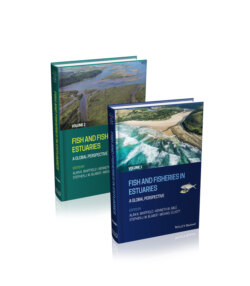Читать книгу Fish and Fisheries in Estuaries - Группа авторов - Страница 49
3.3.1 Dispersal, transport and retention
ОглавлениеA large proportion of estuary‐dependent and ‐associated bony fishes have pelagic larvae and many taxa also have pelagic eggs. Mechanisms and processes controlling transport of eggs or larvae to estuaries, or retaining them upon delivery, have been appreciated, if not fully understood, for decades. Norcross & Shaw (1984) and Boehlert & Mundy (1988) defined the problem, reviewed knowledge and noted important processes and mechanisms. They cited offshore circulation processes that disperse larvae and eggs and, once within an estuary, circulation, flows and larval behaviours. These processes are often described as mechanisms that ensure connectivity amongst habitats occupied by early‐life stages of estuary‐associated fishes (e.g. Duffy‐Anderson et al. 2015, Amorim et al. 2016, Teodosio et al. 2016). The processes and, most of all, the realisation that larval behaviour in response to a suite of sensory cues plays a major and decisive role in ensuring transport and retention are framing research designed to understand processes controlling recruitment to estuaries (Teodosio et al. 2016).
Here, we emphasise three broad, topic areas:
1 Processes supporting ingress of larvae to estuaries from offshore spawning.
2 Movements and retention of larvae within estuaries.
3 The nursery function of estuaries.
During the time that eggs or larvae are drifting in the plankton, their distribution and dispersal are dependent on the surrounding residual water currents and, if the eggs and larvae behave as passive particles, they may disperse long distances from spawning grounds. In marine fishes, for example the gadid Gadus morhua, which, in some stocks, may enter European estuaries as juveniles (Elliott et al. 1990), the finding that dispersal processes are important for transporting early‐life stages to suitable juvenile nurseries has been recognised for more than a century (Hjort 1914, 1926) and mechanisms controlling dispersal, including adult selection of spawning sites, have been addressed frequently (e.g. Harden‐Jones 1968, Werner et al. 1997, 1999, Secor 2015).
For many estuary‐associated species, physical processes that ensure connectivity between the ocean and estuaries, or that ensure retention in estuarine habitat, are even more critical to recruitment success than for species that spawn, develop and recruit offshore (Beckley 1985, Whitfield 1989b, Epifanio & Garvine 2001, Sheaves 2009, Duffy‐Anderson et al. 2015, Van der Veer et al. 2015, Levings 2016). As knowledge has accumulated, the assumption that larval fishes behave as passive particles has come under scrutiny. It is increasingly apparent that larval behaviours, particularly from attainment of the flexion stage and the associated formation of the caudal fin, play a key role in directing dispersal and assuring ingress to estuarine nurseries. Case studies at the end of this chapter (Section 3.6) provide examples of processes and illustrate how estuary‐dependent taxa use hydrodynamics, swimming and larval behaviour to ensure ingress and retention.
